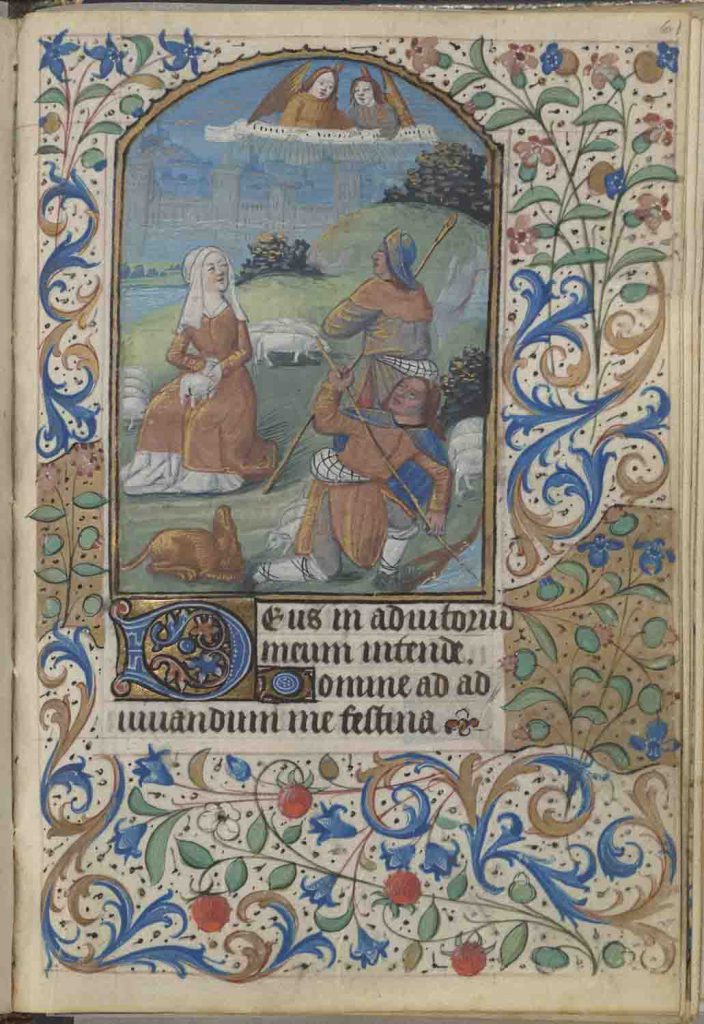
If you’re looking for a digital facsimile of a Book of Hours that provides plenty of hand-holding, I can’t recommend the Connolly Hours (Boston College, John J. Burns Library MS 1986-097) highly enough. The librarians at the Burns Library have lavished much attention on this lovely little manuscript and made that data available to the public. Not only is the finding aid extensive and detailed, but in 1999 the library, faculty, and administration came together to publish a slender volume on the Connolly Hours that is freely available online through archive.org.[1] These two documents make great “training wheels” for students using the facsimile. They explicate, in lay terms, the contents of the manuscript; provide translations of the French prayers and the Latin sufferages (in the 1999 publication); and explain some of the more puzzling key elements of many Books of Hours, such as the way the shorter Hours of the Cross are abbreviated (in the finding aid).
The interface for the digital facsimile itself is one used by many repositories. There are several different viewing layout choices (although the “Page Turner” option gives you the recto and verso of the same folio, not a proper opening); the images load and zoom smoothly; and the “contents” scroll bar provides a list of links rather than thumbnails, making it faster to navigate around the codex. There’s no information about each page visible within the facsimile interface, so you do have to click away to the finding aid to match content with image. Still, it’s a setup that works well.
This manuscript has several other features that make it a great teaching tool. As the finding aid claims, the scribe wrote in a clear and precise hand with minimal abbreviations, making the bookhand fairly easy to read — needful for novice paleographers. It includes some vernacular, and the translation in the 1999 document provides a quick primer on how the fifteenth-century French differs from modern French, again providing helpful assistance for students. The explanatory material also claims that some of the prayers include female pronouns, inviting a scavenger hunt through those prayers. The miniatures are fairly standard but are beautifully executed with charming details. I love the miniature for Terce, Annunciation to the Shepherds (above). The composition of the three shepherds (and their dog) is complex and active, the presence of a shepherdess is intriguing, and the angels at the top of the page are weirdly leg-less, seeming to emerge from the scroll spread before them. Upon closer inspection, though, the angels seem to be rising on top of a haze in the middle ground that separates the foregrounded shepherds from the fuzzier-than-typical castle in the background. It’s as though the arrival of the angels has dropped a curtain between the country shepherds and the urban life represented in the distance, and the way the angels’ bodies emerge from the opened scroll they hold reinforces the sharp divisions between these three planes.
The Boston College community has done a marvelous job with this facsimile and supporting material, and I’m really looking forward to teaching with it.
[1] Timothy M. Sullivan and Rebecca M. Valette, Reflections on the Connolly Hours (Chestnut Hill: University Press of Boston College, 1999). https://archive.org/details/reflectionsoncon00sull
